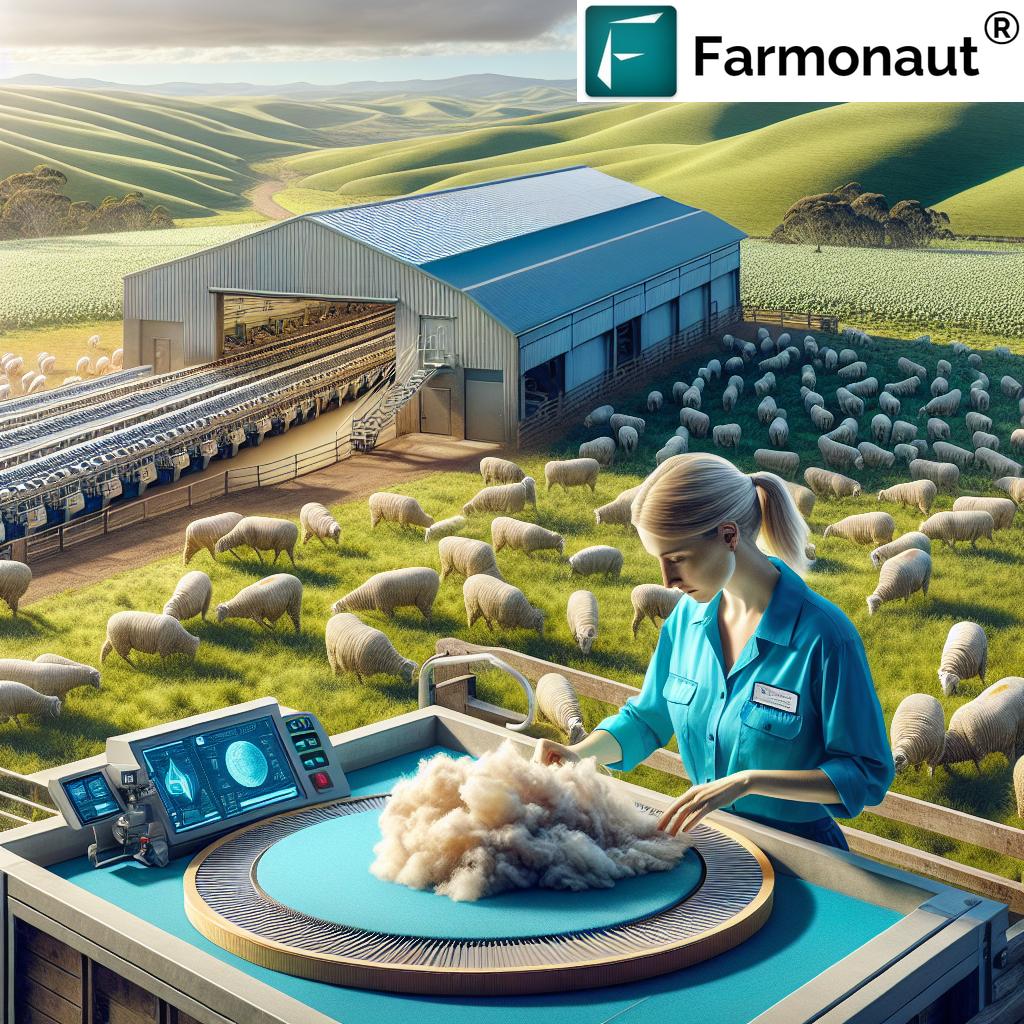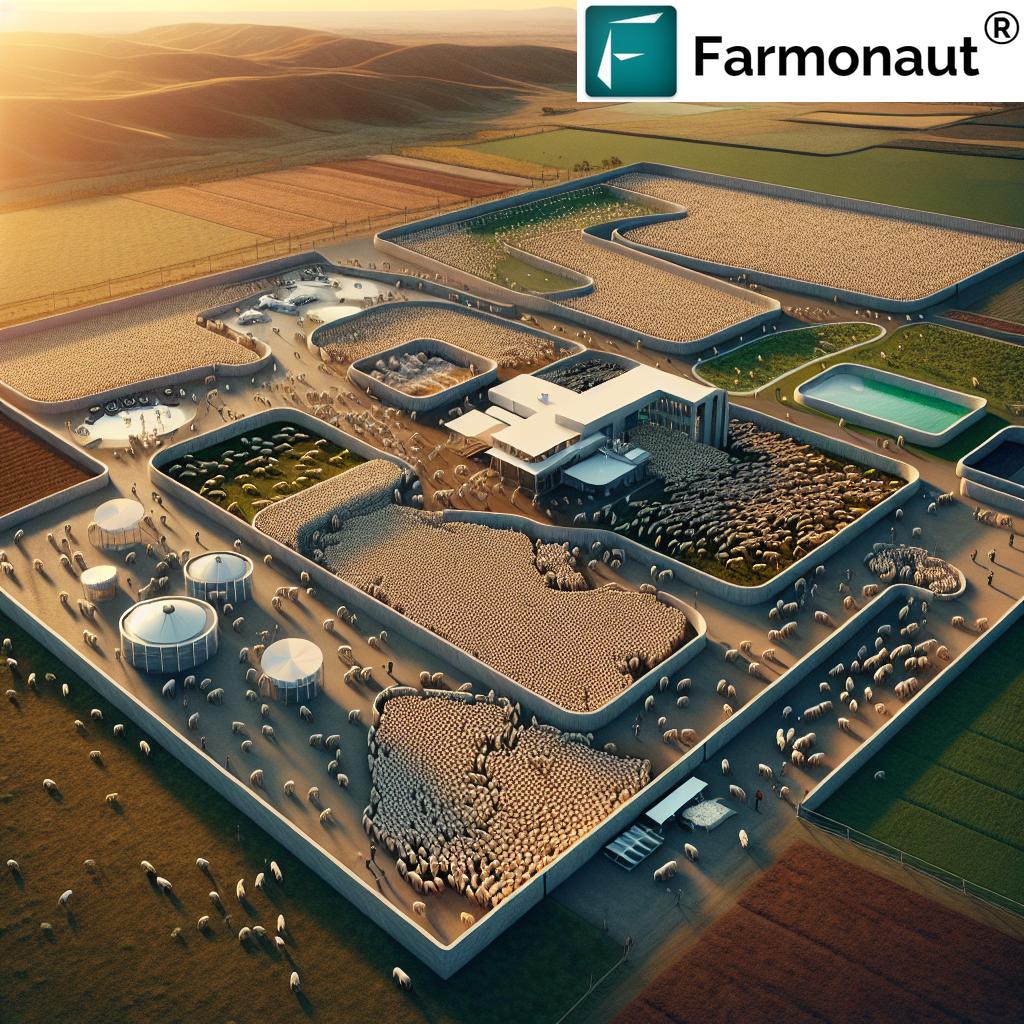The Ultimate Guide to Australian Wool Classer Registration: Standards, Training, and Certification
“Australia has four distinct wool classer registration categories, including Masterclasser and Owner Wool Classer.”
Welcome to our comprehensive guide on Australian wool classer registration, standards, training, and certification. In this article, we’ll delve deep into the world of wool classing, exploring the intricate details of this crucial aspect of the Australian wool industry. Whether you’re an aspiring wool classer, a seasoned professional, or simply interested in learning more about this vital role, we’ve got you covered.
Understanding the Importance of Wool Classer Registration
Wool classer registration is a fundamental aspect of maintaining quality and standards in the Australian wool industry. As we explore this topic, it’s essential to understand that wool classers play a pivotal role in ensuring the sustainability and excellence of wool production in Australia.

The wool classing process involves sorting and grading wool based on various factors such as fiber diameter, strength, length, color, and cleanliness. This meticulous categorization ensures that wool buyers receive consistent, high-quality products, which is crucial for maintaining Australia’s reputation as a premier wool producer in the global market.
The Wool Classer Code of Practice
At the heart of wool classer registration lies the Wool Classer Code of Practice. This comprehensive set of guidelines outlines the standards and best practices that registered wool classers must adhere to. The code covers various aspects of wool classing, including:
- Ethical practices in wool preparation
- Proper documentation and record-keeping
- Compliance with industry regulations
- Maintaining hygiene and safety standards
- Continuous professional development
By following this code, wool classers ensure that they maintain the highest standards of professionalism and contribute to the overall quality of the Australian wool clip.
The Four Categories of Wool Classer Registration
In Australia, there are four distinct categories of wool classer registration, each with its own set of requirements and responsibilities. Let’s explore these categories in detail:
| Registration Category | Experience Required (years) | Training Course Duration (weeks) | Key Responsibilities | Annual Wool Handled (tonnes) | Recertification Frequency (years) |
|---|---|---|---|---|---|
| Masterclasser | 10+ | 4-6 | Advanced classing, mentoring, industry leadership | 500+ | 3 |
| Australian Wool Classer | 3-5 | 2-4 | Full wool clip preparation, quality control | 200-500 | 3 |
| Owner Wool Classer | 1-3 | 1-2 | Classing own wool clip, basic preparation | 50-200 | 5 |
| Classer Associate | 0-1 | 1 | Assisting in wool preparation, basic classing | 0-50 | 5 |
1. Masterclasser
The Masterclasser is the highest level of registration a wool classer can achieve. These individuals are recognized for their extensive experience, exceptional skills, and leadership within the industry. Masterclassers often take on mentoring roles and contribute to the development of industry standards.
2. Australian Wool Classer
This is the standard professional registration for wool classers. Australian Wool Classers are fully qualified to prepare and class wool clips across various environments and sheep breeds. They play a crucial role in maintaining the quality and consistency of the Australian wool clip.
3. Owner Wool Classer
The Owner Wool Classer category is designed for individuals who own or manage properties producing wool. This registration allows them to class their own wool clip, ensuring they have the necessary skills to maintain quality standards on their farms.
4. Classer Associate
The Classer Associate is an entry-level registration, typically for those new to the industry or working under supervision. This category allows individuals to gain practical experience while working towards higher levels of registration.
“Wool classers must complete rigorous training courses and exams to ensure compliance with industry regulations.”
Training and Certification Process
Becoming a registered wool classer requires dedication and a commitment to learning. The training and certification process is designed to ensure that wool classers have the knowledge and skills necessary to excel in their roles. Here’s an overview of the steps involved:
- Educational Requirements: Most wool classer training programs require a minimum of a high school education or equivalent.
- Basic Training Course: Aspiring wool classers must complete a recognized training course that covers the fundamentals of wool classing, including wool biology, clip preparation techniques, and industry regulations.
- Practical Experience: Hands-on experience is crucial. Trainees are required to complete a certain number of hours working with wool under the supervision of experienced classers.
- Examination: A comprehensive exam tests the candidate’s theoretical knowledge and practical skills in wool classing.
- Registration Application: Upon successful completion of training and exams, candidates can apply for registration with the appropriate industry body.
- Continuous Professional Development: Registered wool classers are required to participate in ongoing education and training to maintain their skills and stay updated on industry developments.
It’s worth noting that the specific requirements may vary depending on the registration category and the governing body overseeing the certification process.

The Role of Technology in Modern Wool Classing
As we embrace the digital age, technology is playing an increasingly important role in the wool industry, including wool classing. While traditional skills remain crucial, modern wool classers are also benefiting from technological advancements that enhance efficiency and accuracy in their work.
One such technological innovation is the use of satellite-based farm management solutions. Companies like Farmonaut are at the forefront of this revolution, offering tools that can significantly benefit wool growers and classers alike.
Farmonaut’s platform provides valuable services such as real-time crop health monitoring, which can be applied to pasture management for sheep farms. By utilizing multispectral satellite imagery, farmers can gain insights into vegetation health, soil moisture levels, and other critical factors that influence wool quality.
For wool classers, this technology can provide valuable context about the conditions under which the wool was produced, potentially influencing classing decisions and helping to maintain consistency across different clips.
To explore how Farmonaut’s technology can benefit your wool production or classing operations, consider checking out their services:



Sustainable Wool Production and Classing
Sustainability is a key focus in modern wool production, and wool classers play a vital role in promoting sustainable practices. By accurately classing wool, they ensure that each fiber is used to its full potential, reducing waste and maximizing the value of the clip.
Some key aspects of sustainable wool production that classers should be aware of include:
- Animal welfare practices
- Land management and conservation
- Efficient use of resources
- Minimizing chemical use in wool production
- Promoting biodiversity on sheep farms
Wool classers who understand and promote these sustainable practices contribute not only to the quality of the wool clip but also to the long-term viability of the industry.
The Importance of Continuous Learning in Wool Classing
The wool industry is dynamic, with ongoing developments in breeding practices, shearing techniques, and market demands. As such, continuous learning is crucial for wool classers to maintain their expertise and adapt to industry changes.
Registered wool classers are often required to participate in regular workshops, seminars, and training sessions to keep their skills sharp and their knowledge up-to-date. These educational opportunities cover topics such as:
- Updates to industry standards and regulations
- New technologies in wool production and classing
- Emerging trends in global wool markets
- Advanced clip preparation techniques
- Sustainable and ethical wool production practices
By engaging in continuous learning, wool classers not only enhance their own skills but also contribute to the overall advancement of the industry.
The Role of Wool Classers in Quality Management
Quality management is at the core of a wool classer’s responsibilities. Their expertise ensures that wool is accurately categorized, which is essential for both producers and buyers. Here’s how wool classers contribute to quality management:
- Accurate Grading: Classers assess each fleece for various quality factors, ensuring it’s placed in the correct category.
- Contamination Prevention: They vigilantly check for and remove any contaminants that could affect the wool’s quality or processing.
- Documentation: Proper record-keeping of wool characteristics and classifications is crucial for traceability and market confidence.
- Advice to Producers: Classers often provide feedback to farmers on how to improve their wool quality through better farming practices.
- Market Alignment: By understanding market trends, classers can prepare wool clips that meet current buyer demands.
For those interested in leveraging technology to enhance quality management in wool production, Farmonaut offers valuable tools. Their API and API Developer Docs provide access to cutting-edge satellite and weather data that can inform farm management decisions.
The Future of Wool Classing in Australia
As we look to the future, the role of wool classers in Australia continues to evolve. With advancements in technology and changing market demands, wool classers are adapting to new challenges and opportunities. Some key trends shaping the future of wool classing include:
- Integration of digital tools for more precise wool assessment
- Increased focus on sustainability and ethical wool production
- Growing demand for specialized wool types for niche markets
- Enhanced traceability requirements throughout the supply chain
- Greater emphasis on animal welfare in wool production
Wool classers who stay ahead of these trends and continue to develop their skills will be well-positioned to thrive in the industry.
Conclusion
Australian wool classer registration is a rigorous process that ensures the highest standards of quality and professionalism in the wool industry. From the various registration categories to the comprehensive training and certification process, wool classers play a vital role in maintaining Australia’s reputation as a producer of premium wool.
As the industry continues to evolve, embracing new technologies and sustainable practices, the expertise of registered wool classers becomes increasingly valuable. Whether you’re considering a career in wool classing or looking to enhance your existing skills, understanding the intricacies of registration, standards, and best practices is essential for success in this dynamic field.
Remember, the journey to becoming a skilled wool classer is one of continuous learning and adaptation. By staying informed, embracing new technologies, and maintaining a commitment to quality, wool classers can continue to play a crucial role in shaping the future of the Australian wool industry.
FAQ Section
Q: What is the minimum education required to become a wool classer?
A: Most wool classer training programs require a minimum of a high school education or equivalent.
Q: How long does it take to become a registered wool classer?
A: The duration can vary depending on the registration category, but it typically takes 1-4 weeks of formal training, followed by practical experience and examinations.
Q: Can I class wool without being registered?
A: It’s highly recommended and often required to be registered to class wool professionally in Australia. Unregistered classing may not meet industry standards.
Q: How often do wool classers need to renew their registration?
A: Recertification frequency varies by registration category, ranging from 3 to 5 years.
Q: What are the key responsibilities of a Masterclasser?
A: Masterclassers are involved in advanced classing, mentoring other classers, and taking leadership roles in the industry.
Q: How can technology assist in wool classing?
A: Technology like satellite imagery and data analytics can provide valuable insights into farm conditions, potentially influencing wool quality and classing decisions.
Q: What is the Wool Classer Code of Practice?
A: It’s a comprehensive set of guidelines that outline the standards and best practices for registered wool classers in Australia.
Q: How does sustainable wool production impact wool classing?
A: Sustainable practices can influence wool quality and characteristics, which classers need to consider in their assessments. Classers also play a role in promoting sustainable practices.
Q: What ongoing education is required for wool classers?
A: Registered wool classers are often required to participate in regular workshops, seminars, and training sessions to keep their skills and knowledge up-to-date.
Q: How do wool classers contribute to quality management in the wool industry?
A: Wool classers ensure accurate grading, prevent contamination, maintain proper documentation, provide advice to producers, and align wool preparation with market demands.



